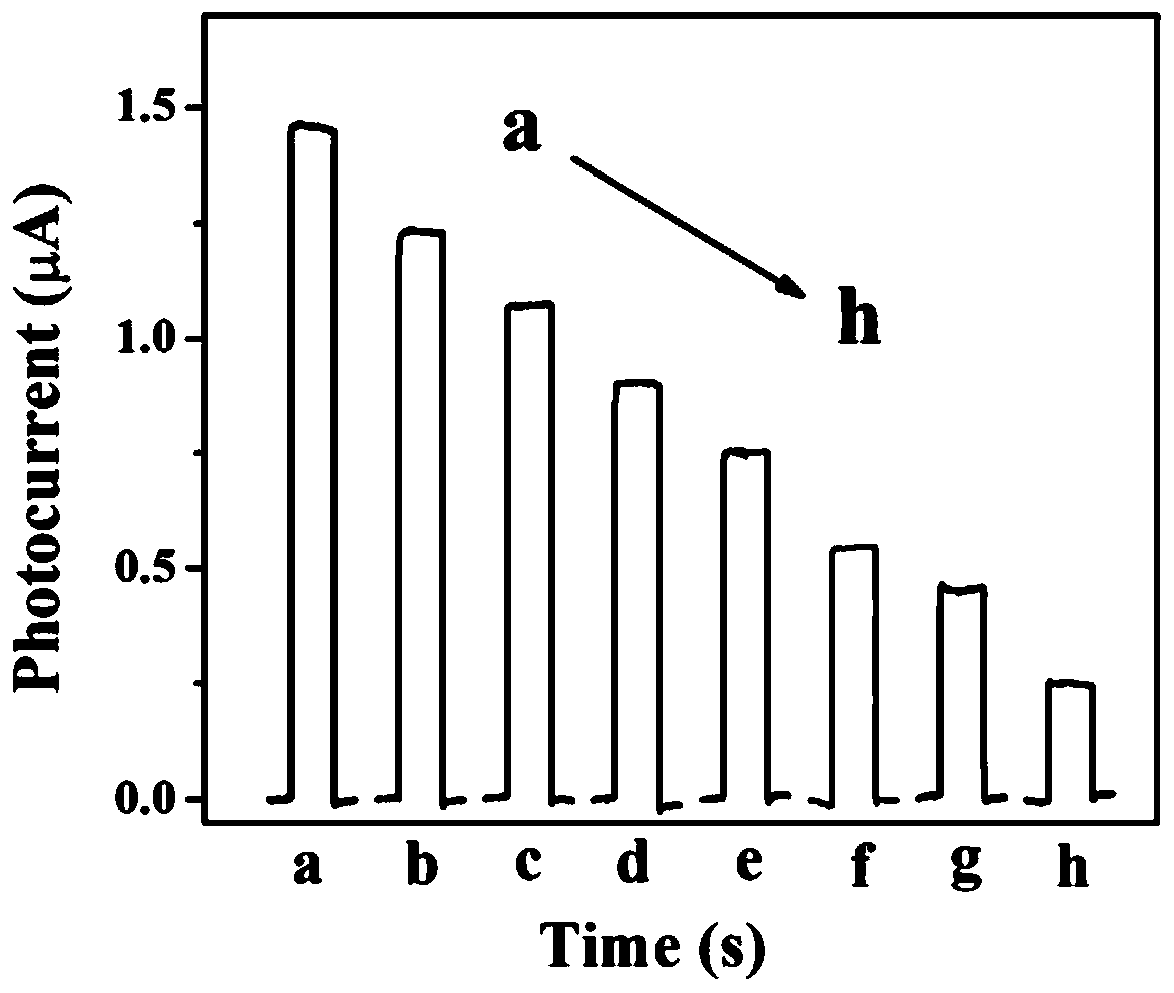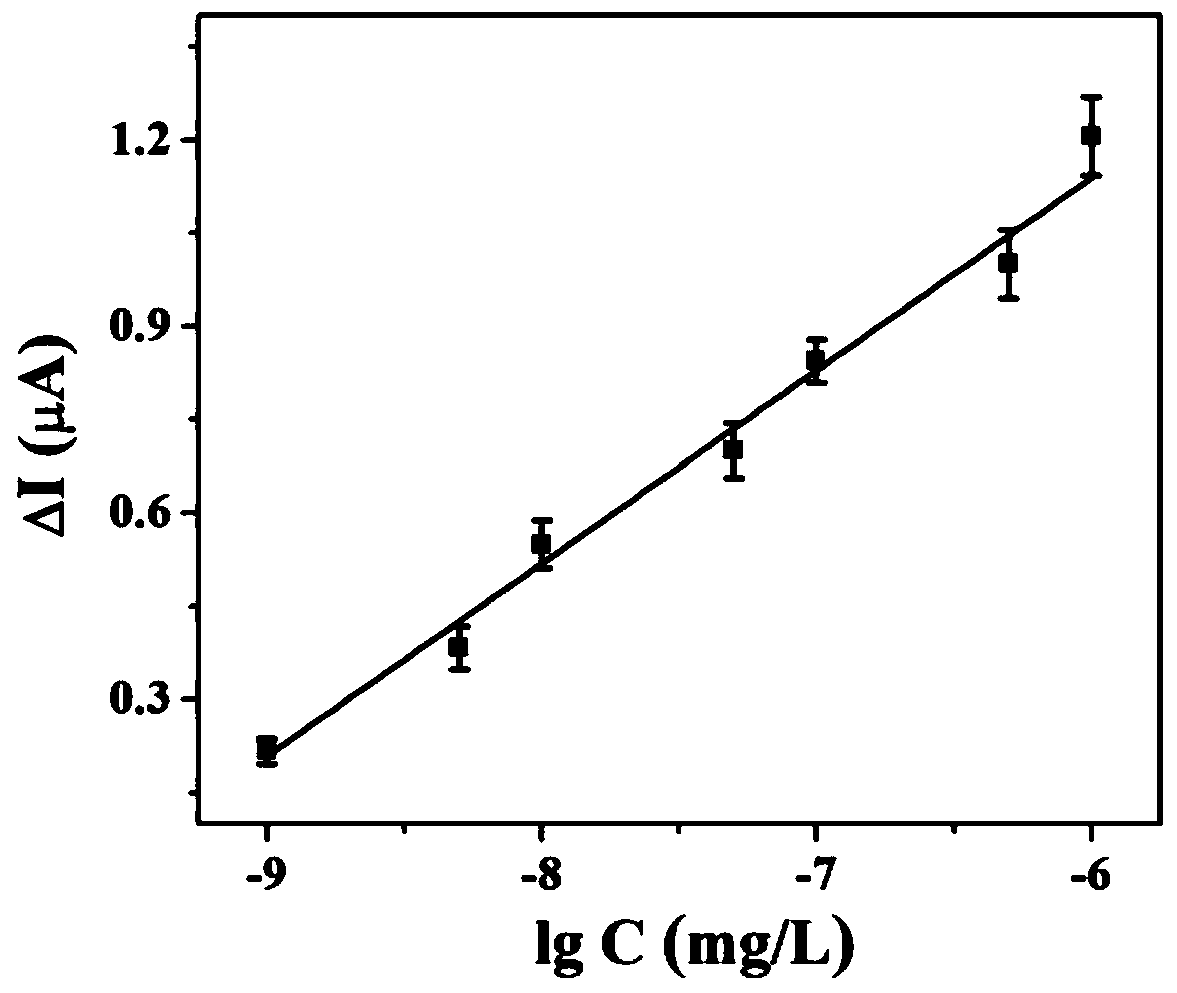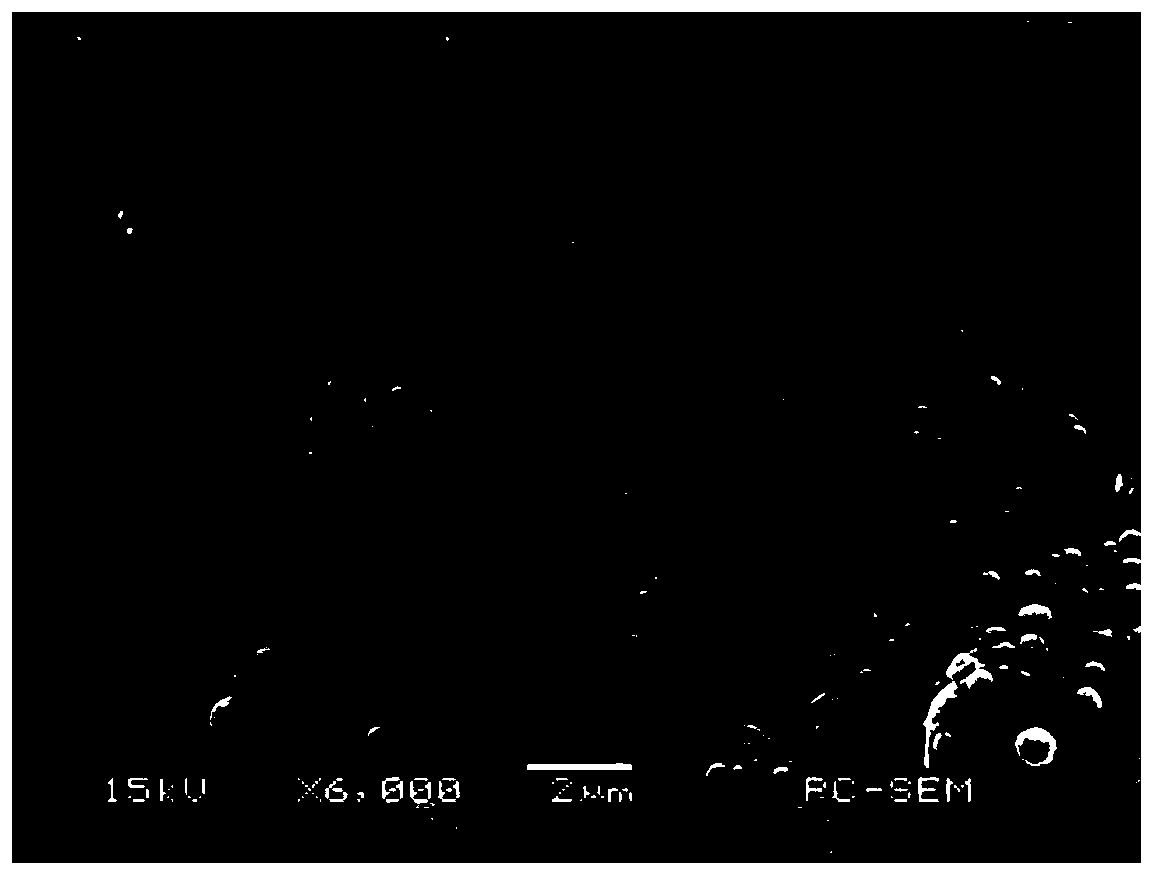Method for detecting chlorpyrifos based on photoelectrochemical sensor
A photoelectrochemical and chlorpyrifos technology, which is applied in the preparation of photoelectrochemical sensors and the detection of chlorpyrifos, can solve the problems of complex instrument, long response time, low selectivity and sensitivity, etc., and achieves fast analysis speed, low detection limit and high sensitivity. Effect
- Summary
- Abstract
- Description
- Claims
- Application Information
AI Technical Summary
Problems solved by technology
Method used
Image
Examples
Embodiment
[0024] (1) Preparation of Ti 3 C 2 -AgBr modified ITO electrode
[0025] (1) Ti 3 C 2 - Preparation of AgBr composite material:
[0026] Add 8mL Ti to a 50mL one-necked flask 3 C 2 solution (0.6mg / mL), 8mL ethylene glycol solution and ultrasonication for 20min, then add 195.9903mg of 1-hexadecyl-3-methylimidazolium bromide, and react at room temperature for 30min. Then accurately weigh 85.9312mg AgNO 3 Dissolve it in 2mL of ammonia water, slowly drop it into the above-mentioned one-necked flask, and put it in an oil bath at 90°C for 6h. After the oil bath was completed, the supernatant was discarded by centrifugation, washed three times with water, and the precipitate was freeze-dried for 12 hours to obtain Ti 3 C 2 -AgBr composite material (wherein, Ti 3 C 2 The doping mass of the composite material is 5%), stored at room temperature and protected from light. Take 20mg Ti 3 C 2 - The AgBr composite material was dispersed in 10 mL of DMF for use.
[0027] (2) IT...
PUM
| Property | Measurement | Unit |
|---|---|---|
| Concentration | aaaaa | aaaaa |
Abstract
Description
Claims
Application Information
 Login to View More
Login to View More - R&D
- Intellectual Property
- Life Sciences
- Materials
- Tech Scout
- Unparalleled Data Quality
- Higher Quality Content
- 60% Fewer Hallucinations
Browse by: Latest US Patents, China's latest patents, Technical Efficacy Thesaurus, Application Domain, Technology Topic, Popular Technical Reports.
© 2025 PatSnap. All rights reserved.Legal|Privacy policy|Modern Slavery Act Transparency Statement|Sitemap|About US| Contact US: help@patsnap.com



